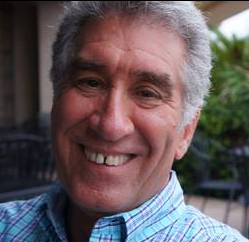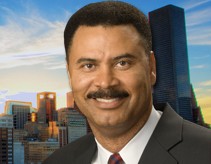The first poll of the season is always exciting news.

Mayor Annise Parker
Annise Parker seems headed for a runoff in her campaign to keep her job, but she commands more than twice as many supporters as her leading challenger in a newly released poll commissioned by KHOU 11 News and KUHF – Houston Public Radio.
Still, just six weeks before Election Day, roughly half of all surveyed voters either didn’t know or wouldn’t say how they’re going to vote.
Parker leads the pack of candidates at 34 percent, with former city attorney Ben Hall at 14 percent. About 48 percent of voters are classified as undecided, indicating the incumbent mayor will have to fight to keep the post to which she was narrowly re-elected two years ago.
“I don’t see the mayor losing this race,” said Bob Stein, the KHOU political analyst who conducted the survey. “I’m not certain she’ll win it in the general election, like she did in 2011. But the mayor, who tends to get high marks as a mayor, simply doesn’t get what I’d call great public support as a candidate.”
Seven other candidates who filed for the office garnered little support in the poll, but their presence on the ballot may attract just enough votes to toss the election into a runoff.
The Chron story on the poll puts the numbers at 34.1 for the Mayor and 13.6 for Hall. It also reports that Erick Dick was next in line with 2 percent, and that the sample was 424 “people” – I presume that means “registered voters”, not just anyone who answered the phone – with a margin of error of 4.76%.
Couple things here. First, as I have said before, polling in a Mayor’s race is a tricky affair because turnout is low. We had less than 20% turnout in 2009, and not much more than 10% in 2011. Polling “registered voters” and not “mostly people who have voted in at least two of the last three municipal elections” is going to get you a skewed result because you’re going to get a lot of responses from people who will not be voting in November. Just ask Mayor Peter Brown, who was the frontrunner in two separate polls in 2009. Brown’s numbers relative to his opponents were bolstered by his being on the airwaves for weeks at the time of the polls. Hall has not run nearly as many ads as Brown did four years ago, so his lower total is not surprising.
As for Parker’s 34%, there are a couple of ways to look at this. One is to note that it’s slightly less than the support she received in an October 2011 poll, which had her at 39% on a “re-elect or not” question and at 37% in a question where she and all her opponents were named. If Ben Hall, who put out a triumphant press release about this poll, wants to grab onto something, that’s what I’d reach for. Against that is the fact that in 2011, “fully half of likely Houston voters — 50 percent — rate Parker’s job performance ‘fair’ or ‘poor,’ while 47 percent rate her ‘good’ or ‘excellent’.” She did better in this year’s poll, as noted by the Chron:
Political observers said arguably more important than the poll’s horse-race numbers are the wider trends: 62 percent of respondents said Houston is on the right track, 56 percent said they expect the economy to improve in the next few years, and 57 percent said Parker has done an “excellent” or “good” job.
You can see the full numbers here. The “fair” or “poor” total is 41%. These are much better numbers for Parker, and no doubt reflect the better economy as well as her much more peaceful second term. It’s fair to say that overall, she’s in better shape than she was two years ago.
That doesn’t mean she’ll top fifty percent in November, however. Back to KHOU:
Hall has indicated he hopes to garner significant support from two key constituencies: African-American voters and Republicans disenchanted with Parker. But so far, the poll indicates that strategy isn’t working well enough to propel him into office.
“Ben Hall is an African-American former city attorney,” Stein said. “He expects to bring out a large number of African-American voters and win 80, 90 percent of that. Doesn’t seem to be working. Turnout may be a little bit higher among African-American voters, but he’s only winning 29 percent of the African-American vote, to the mayor’s 24 percent.”
Meanwhile, Parker garners 27 percent of Anglo Republican voters’ support compared to Hall’s 11 percent.
Don’t put any stock in Hall’s totals here – the “I don’t know, but then again I’m highly unlikely to vote in November” factor is too big. I refer back to my earlier observation about the African-American vote in the 2009 runoff. Gene Locke received 72% in the old districts B and D. If Ben Hall needs to top that by ten or twenty points, he’s in trouble. That said, Locke did get 83% in District B, and the old District D included some Parker-friendly turf like parts of Montrose, so there is some wiggle room in those numbers. But Hall does have to maximize his share of the vote in his best areas, and he has to boost turnout, and he needs more than just a good share of the vote in Districts B, D, and K. There’s not much here to suggest that he’s on track for that.
Of course, that’s all in the context of a two-candidate race, which is to say a runoff. We’re not in a runoff situation yet. How good a job Parker and Hall do getting their voters to the polls will have a large effect on whether Parker can make it past the 50% line or not. Along the same lines, if the minor candidates combine for about ten percent of the vote, fifty percent is in reach for Parker. If they combine for 20, a runoff is a near certainty. One theory, which Campos voiced last week, is that both Parker and Hall are keeping their powder dry for a runoff, which they both expect. I have no idea if that is the case, and if I’m Team Parker, I’d much rather take my best shot at winning in November. But with the relatively low visibility of the campaigns so far, it’s not completely far-fetched.
Finally, speaking of turnout, here’s the KUHF story:
Mark Jones says the mayor’s race and the Astrodome initiative may draw a few thousand extra voters, but that might work against some of the races.
“That benefits the incumbents some, but it also can lead to a greater probability of a run-off simply because people are casting votes with relatively little information about the candidates in play. The larger the turnout gets, probably the more likely most of these multi-candidate races are to go to a run-off.”
There are about one million registered voters in the City of Houston, but less than 200,000 are expected to turn out for the general election.
I agree that the Astrodome referendum, which is also pretty low key at this time, is unlikely to have much effect on the Mayor’s race. To say the least, however, “less than 200,000 are expected to turn out for the general election” is an understatement. Less than that turned out in the much noisier 2009 general election. My opening over/under line was at 150,000, about the level for the 2009 runoff, but that feels like it might be a bit high, too. It’s still early, and I know both campaigns are doing ground work, but still. I’m not expecting much, and for better or worse one has rarely been wrong taking the under in turnout predictions in recent years. Stace, PDiddie, Bay Area Houston, and Texpatriate have more.



























